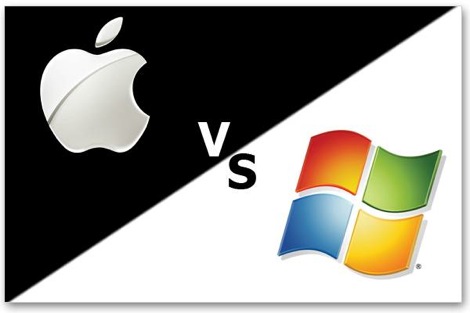
The “CEO of the Decade” is no longer CEO.
After the initial shock, a general impulse seems to have seized commenters, which is to reassure everyone that everything will be OK.
“Apple will do amazingly well without Steve Jobs,” says Slate’s Farhad Manjoo.
PC World‘s Tony Bradley says we shouldn’t panic, because “Apple Is Still Apple.”
“Apple will continue to shine without Jobs at the helm,” says Seeking Alpha‘s Carl Howe.
Why? Because Apple “is more than Steve Jobs,” according to Christina Rexrode of the Associated Press.
All these headlines are technically true, but add up to wishful thinking that masks the larger truth. Yes, Apple is more than Steve Jobs.” But Apple without Steve Jobs is less than Apple with him. A lot less.
Why Steve Jobs was the Greatest CEO EverSome CEOs are born great, some achieve greatness and some have greatness thrust upon them.
In Jobs’ case, all three are true.
Jobs’ entire life was a “perfect storm” of elements for the man to lead Apple and make it the company it has become. Jobs was born at exactly the right time in exactly the right place with exactly the right personality to become the ultimate consumer electronics visionary.
Jobs was born with a personality containing equal parts perfectionism, narcissism, impatience and a quality you might call extremism.
Above all, Jobs was born with the DNA of a writer. (It’s not a coincidence that both his biological sister and daughter are successful writers.)
Writer DNA predisposes the victim to gravitate to the larger issue, whenever confronting particulars, to larger truths when confronting facts. For example, Jobs never viewed Apple as a company that makes computers and consumer electronics gadgets. To him, Apple makes culture accelerators. It manufactures human experience. Apple doesn’t “succeed in the marketplace.” It “changes the world.”
Critics always slam Jobs as “merely a salesman.” But that’s wrong. Jobs thinks like a writer, understanding and obsessing over larger truths and aspirations, and conveying them with piercing, emotive and unforgettable language. This is what great novelists do.
Jobs was born with qualities that made him the greatest CEO ever, but he also acquired greatness as a CEO. The hard way.
Throughout all his personal transitions, from wandering hippy to enfant terrible to pop-collar douchebag to hard-nosed businessman to the impossible-to-stereotype person that he is today, Jobs has been constantly confronted by challenge after challenge. And each one of them has made Jobs grow as a leader.
The kid who couldn’t be trusted by investors to lead the company as CEO in the 1970s had no idea what he was doing. The man who strode back into Apple in the 1990s as part of the NeXT acquisition was an unprecedented master of the art of running a technology company. During those two decades, Jobs experienced an education like no other. NeXT enabled him to take all he had learned at Apple, and apply it to a startup. Then he took all he had learned at the startup and applied it to Apple.
This perfect storm of DNA, experience and circumstance transformed Jobs into the CEO of the Decade. But what is it about Jobs as CEO that brought Apple from the brink of failure to the most valuable technology company in history?
How Jobs Ruled AppleThe trouble with dictatorship or absolute monarchy is that success or failure depend entirely upon the quality of the despot. That’s why they fail. And that’s why a democracy that limits the power of leaders is best — it still works, more or less, even when incompetent morons are in power.
But what about when the dictator is literally the single best person to lead? In those almost non-existently rare instances, despotism is by far the best form of government. Heaven, for example, is not a democracy.
In the case of Apple, it’s not just that Steve Jobs had become an amazing CEO, but that within Apple, he ruled unchallenged. Sure, he had a razor sharp vision for how things should be. But equally important: Nobody could over-rule Jobs. Not the owners of the company (the shareholders), not the board, not the desires of the users — literally nobody.
People outside the industry often fail to appreciate how powerful this is.
You will note, by the way, that all the most successful companies in technology are run by their visionary founders (Apple, Google, Oracle), and lose focus after those founders depart (Microsoft, HP).
The reason is that without the visionary despot, “groupthink” takes over. Everyone’s got their own agenda, and all these disparate visions tend to cancel each other out. Ultimately, the only criteria for deciding anything is either what’s best for shareholders (short-term thinking) or what users want (obsolete thinking).
At Apple, Jobs’ rule was so absolute that if Jobs wanted decision A, and most of the board, most of the executives, most of the user surveys and most of the shareholders wanted decision B, there was no question: We go with A.
I once heard an eye-opening talk by Palm Pilot creator Jeff Hawkins, who said that in bringing the Palm Pilot to market, he spent much of his time overcoming groupthink. The engineers made compelling arguments for why more buttons would be better, a faster processor would be better, more applications would be better. Ultimately, the original Pilot succeeded only because Hawkins was able to bat down all these disparate visions, which were all based on false assumptions like “more is better,” “more powerful is better,” and realize his own vision “simplicity is better.”
It didn’t take long after the Pilot’s initial success for Hawkins to lose control. The result was a company dominated by multiple agendas and classic groupthink ending ultimately with the announcement last week that the Palm line would be terminated.
Jobs’ power and influence within Apple did not come from his title. His vote was the only one that counted not because his business card said CEO, but because he’s fricken Steve Jobs, and this is fricken Apple. Who is going to over-rule him?
Apple isn’t just getting a new ruler. It’s getting a new form of government. Yesterday, Apple was a totalitarian dictatorship. Today, it’s a democratic oligarchy.
Unlike Jobs, Cook will have to balance the competing interests of various VPs and board members, taking into account the interests of shareholders and users on every decision.
Yes, Jobs is still Chairman, still Cook’s boss. But it was Jobs’ involvement in every little detail that made Apple what it is today. Google’s Vic Gundotra told the story yesterday of getting a call on Sunday from Steve Jobs over a color on an icon. It wasn’t the absolutely perfect shade of yellow, and therefore it was an urgent crisis that had to be resolved immediately. Every. Little. Detail.
Those days are gone.
Apple will continue to be a successful company. This is in part because Jobs has put such a great team in place. The governing criteria for all decisions for the time being will be: What would Steve do?
Over time, however, Apple will and must gravitate toward normalcy, toward average, toward mediocrity. In fact, the success of Apple as a company has always perfectly correlated to the degree of Jobs’ control.
Nobody wants to hear this. I don’t want to say it. But the truth is that Steve Jobs is perfectly irreplaceable. And it was his unprecedented, unrepeatable leadership that made Apple what it is today.
Tomorrow, it will become a different Apple, a lesser Apple.
Companies are only as great as the people who lead them. And today we’re forced to admit that it was, all along, Steve Jobs who made Apple think different.
Apple will continue to be a great company. But it was Steve Jobs who was insanely great.
Πηγή:
http://www.cultofmac.com/110518/no-apple-wont-be-the-same-without-steve-jobs/ 




























